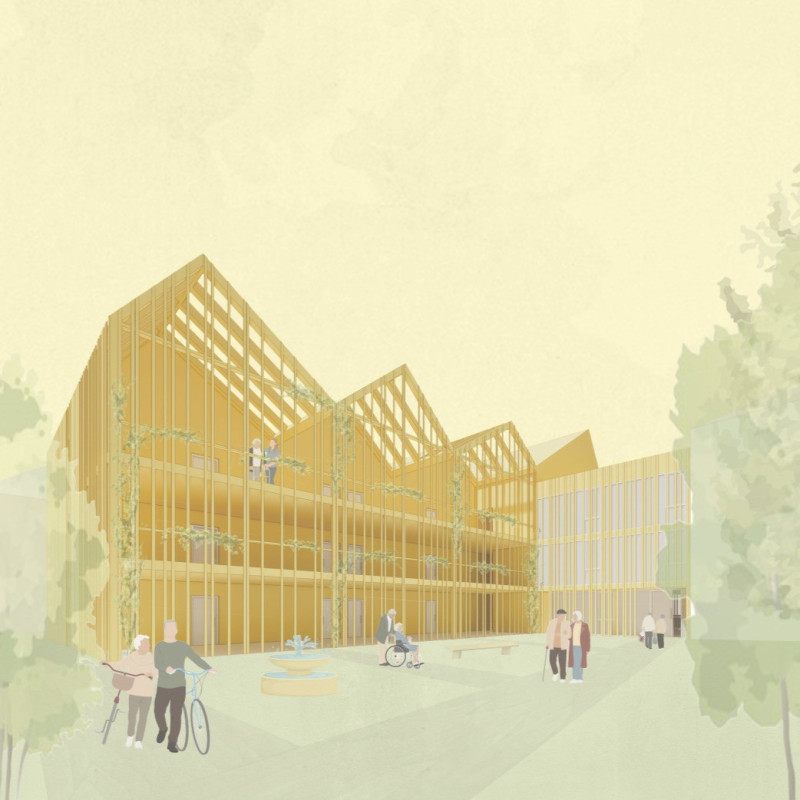5 key facts about this project
At its core, the architecture reflects a thoughtful response to the specific contextual needs of the location, considering factors such as climate, topography, and cultural significance. The design embodies a seamless integration with its environment, allowing for natural light to penetrate deep into the interior spaces while optimizing exposure to the landscape. This connection fosters an atmosphere of openness and accessibility, encouraging interaction among users and promoting a communal spirit.
Functionally, the project is designed to accommodate a variety of activities. Spaces are strategically arranged to foster a sense of flow and movement throughout the building. The architectural layout consists of interconnected zones, which include social gathering areas, workspaces, and areas for recreation. This multifunctionality enhances the usability of the structure, catering to diverse user needs and ensuring that the building remains relevant over time.
Materials play a critical role in the architectural narrative, reinforcing the building's relationship with its environment while reflecting modern construction practices. The project utilizes a combination of natural and engineered materials, including sustainably sourced wood, concrete, glass, and metal elements. Each material is chosen not merely for its aesthetic appeal but also for its functional properties, ensuring durability and performance under varying conditions. The wooden elements provide warmth, while the use of concrete and glass enhances structural integrity and facilitates transparency, creating an ongoing dialogue between interior and exterior spaces.
Unique design approaches evident in this project include the incorporation of green technologies and sustainable practices. The architecture embraces principles of energy efficiency, utilizing innovative solutions such as solar panels, water recycling systems, and green roofs. These features demonstrate a commitment to reducing the ecological footprint of the building while promoting responsible resource management. The modern design is not only visually appealing but also embodies a forward-thinking ethos that prioritizes environmental stewardship.
Another noteworthy aspect of the project is its emphasis on user experience. The interior layout is intentionally designed to prioritize comfort and accessibility, accommodating people of all ages and abilities. Consideration is given to sightlines, acoustics, and circulation, ensuring that all users can navigate the space with ease. The building's design promotes social interaction while allowing for moments of solitude, effectively balancing communal and individual spaces.
As a culmination of artistic vision and practical execution, the project stands as a testament to the evolving nature of architecture. It challenges conventional notions of building design by promoting a holistic approach that intertwines sustainability, functionality, and aesthetic appeal. The architectural plans and sections reveal intricate details of the design intent, showcasing how each element contributes to the overall functionality and character of the building.
Potential visitors and interested parties are encouraged to further explore the architectural details presented, as they offer a deeper insight into the design process and underpinning philosophies. Examining the architectural plans, sections, and innovative ideas can enrich one’s understanding of how thoughtful design can possess both integrity and relevance in contemporary society. By delving deeper, one can appreciate the complexities and nuances that make this project a noteworthy addition to the architectural landscape.

























